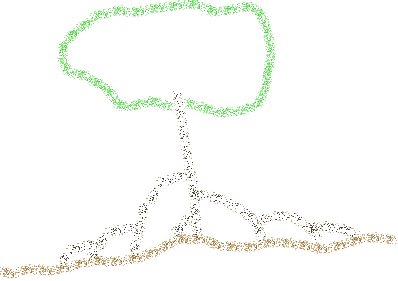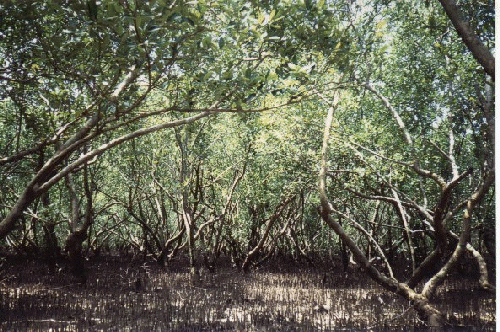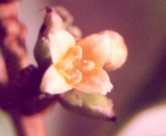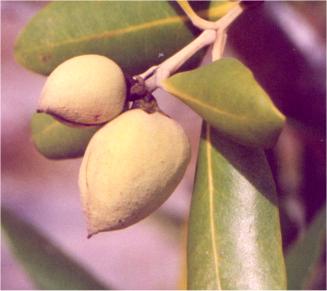
|
A field guide to Kenyan
mangroves
|
|
Avicennia marina (Forsk.) Vierh. 1907
Family: Avicenniaceae

Distribution
This mangrove tree (Avicennia marina) probably displays one of the broadest
distributions over the Indian Ocean to the Western Pacific when compared to
other mangrove trees of the region. Bruguiera
gymnorrhiza comes close to the distribution of Avicennia marina,
but Avicennia marina is more tollerant to extreme conditions in higher
latitudes. In Kenya, Avicennia marina typically displays a double zonation
pattern, occuring on the coastal edge of the mangroves as tall trees (up to
about 15 m), as well as on the terrestrial edge, often exhibiting various degrees
of dwarf-growth depending on the salinity and on the drainage of the site.
Leaves
Leaves of A. marina exhibit a lot of variation depending on the salinity
of the environment. In areas with low salinities, leaves are lanceolate, with
a pointed apex and are on average 15 cm long. In an extremely saline environment,
leaves are more elliptical with a rounded apex ; they are more leathery and
are very small (2cm length in extreme conditions). The underside of the leaves
have a typical greyish-whitish color, due to the presence of small hairs. On
the upperside of the leaves, salt cristals, excreted by the leaves can be observed.
Gillikin et al. (2004) determined that these are the choice leaves for Neosarmatium
meinerti.
|
Root system Flowers |
 |
|
Fruit
|
 |
References:
Gillikin, D.P., B. De Wachter and J.F. Tack, 2004. Physiological responses of two ecologically important Kenyan mangrove crabs exposed to altered salinity regimes. Journal of Experimental Marine Biology and Ecology 301(1):93-109. (http://authors.elsevier.com/sd/article/S002209810300474X) (REPRINT)
Tomlinson, P.B., 1986. The Botany of Mangroves. Cambridge University Press. Cambride Tropical Biology Series. 413 pp.